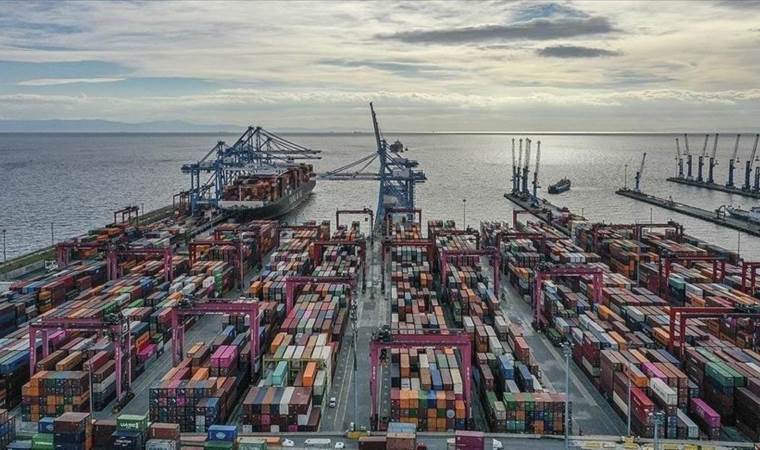Mangroves, world's unique ecosystems, declining at alarming level
Mangroves act as form of natural coastal defense against natural disasters, saving billions of dollars and millions of lives.

The crucial roles of mangroves and threats to these unique ecosystems are taking the global spotlight Tuesday on the occasion of the International Day for the Conservation of the Mangrove Ecosystem, or World Mangrove Day.
The international day, which has been celebrated on July 26 annually since 2015, aims to raise awareness of the importance of mangrove ecosystems as "a unique, special and vulnerable ecosystem.”
Since mangroves grow along tropical coastlines and in saltwater environments on the boundary between land and sea, they are seen as a critical component of marine ecosystems, serving as nursery grounds for many aquatic species, including commercially important fish species.
Mangroves also reduce the impacts of storms and keep coastal erosion under control as it is known that mangroves even reduced the impact of the 2004 Southeast Asian tsunami.
"Mangroves act as a form of natural coastal defense against storm surges, tsunamis, rising sea levels and erosion. Their soils are highly effective carbon sinks, sequestering vast amounts of carbon," according to the United Nations Educational, Scientific and Cultural Organization (UNESCO).
UN figures indicate that a hectare of mangrove forest can store 3,754 tons of carbon, which is the equivalent of taking over 2,650 cars off the road for a year.
In total, the world’s mangroves store carbon equivalent to over 21 gigatons of carbon dioxide.
Additionally, mangroves are home to a rich fauna, including 341 internationally threatened species ranging from tigers to seahorses.
MANGROVES VANISHING
The area of mangrove habitat in the world is about 135,881 square kilometers (52,464 square miles), which represents a linear coverage of 11.96% of the world's total coastline according to data in 2016.
But these rich ecosystems, which also play a crucial role in climate change adaptation and mitigation, are under huge risk as they are disappearing three to five times faster than overall total forest losses.
"It is estimated that some countries lost more than 40% of their mangroves between 1980 and 2005, often due to coastal development," Audrey Azoulay, the director-general of UNESCO, said previously.
According to the latest statistics, these globally rare forests are found in 123 nations and territories but represent less than 1% of all tropical forests worldwide and less than 0.4% of the global forest estate.
These ecosystems are also threatened by conversion into aquaculture and agriculture and urban and resort development as well as rises in sea levels.
Since mangroves act as fish nurseries and homes to various species of animals, experts warn that shrinking mangroves may affect coastal communities which depend on fishing to earn a living in the long term.
If mangroves are destroyed, degraded or lost, large amounts of carbon dioxide would be released into the atmosphere, warn experts, adding carbon emissions from mangrove deforestation correspond to up to 10% of emissions from deforestation globally, despite only covering 0.7% of total land coverage.
It is also estimated that flood damage would increase by more than $65 billion, while 15 million more people would be flooded every year.
URGENT NEED FOR PROTECTION
To stem the alarming decline of mangroves, international organizations including UN institutions and conservation non-governmental organizations (NGOs) continue their efforts towards protection by conducting a number of studies and projects as well as monitoring mangrove resources for conservation purposes.
A report titled The State of the World's Mangroves 2021 revealed that the greatest net losses of mangroves were in Southeast Asia, with 6%, and North and Central America and the Caribbean with 7%.
Meanwhile, Mexico, Indonesia, Brazil, Myanmar, Australia, Thailand, Mozambique, Malaysia, India and Bangladesh were the 10 countries worldwide with the largest gains in mangrove habitat extent between 1996 and 2016, noted the report, published by the Global Mangrove Alliance.
However, the extent of mangroves around the world decreased by 6,057 square kilometers (2,338 square miles) in total during same period.
To revive these vulnerable ecosystems, UNESCO carries out various projects, including the "Man and the Biosphere Program (MAB)" and the "International Blue Carbon Initiative" as well as the protection of mangroves by naming them "World Heritage sites."
The Global Mangrove Alliance is making efforts towards mangrove protection by using several tools.
Aiming at bringing together governments, NGOs, scientists and local communities, the alliance provides live maps of mangrove estates across the world.
"Green-Grey Infrastructure in the Philippines," "Land-use planning in Liberia" and "Valuing Blue Carbon in the Kaimana MPA" are among the alliance’s projects.
The annual Mangrove Photography Awards is another initiative to raise awareness in this regard, launched by the US-based nonprofit Mangrove Action Project.
Most Read News
-
 Gaza death toll tops 50,800 as Israeli attacks kill 58 m
Gaza death toll tops 50,800 as Israeli attacks kill 58 m
-
 Russia says new round of talks with US to be coordinated
Russia says new round of talks with US to be coordinated
-
 Australia gifts drones to Philippine Coast Guard amid ma
Australia gifts drones to Philippine Coast Guard amid ma
-
 Houthi group reports 22 more US airstrikes across Yemen
Houthi group reports 22 more US airstrikes across Yemen
-
 EU chief cautions against ‘further escalation’ in call w
EU chief cautions against ‘further escalation’ in call w
-
 China rejects Trump's new tariff threat, vows to 'fight
China rejects Trump's new tariff threat, vows to 'fight
-
 EU lays out response to US tariffs, keeps door open for
EU lays out response to US tariffs, keeps door open for
-
 US Supreme Court rules Trump administration can continue
US Supreme Court rules Trump administration can continue
-
 South Korea says ‘warning shots’ fired after North Korea
South Korea says ‘warning shots’ fired after North Korea
-
 Musk made 'direct appeals' to Trump to reverse tariffs:
Musk made 'direct appeals' to Trump to reverse tariffs:










